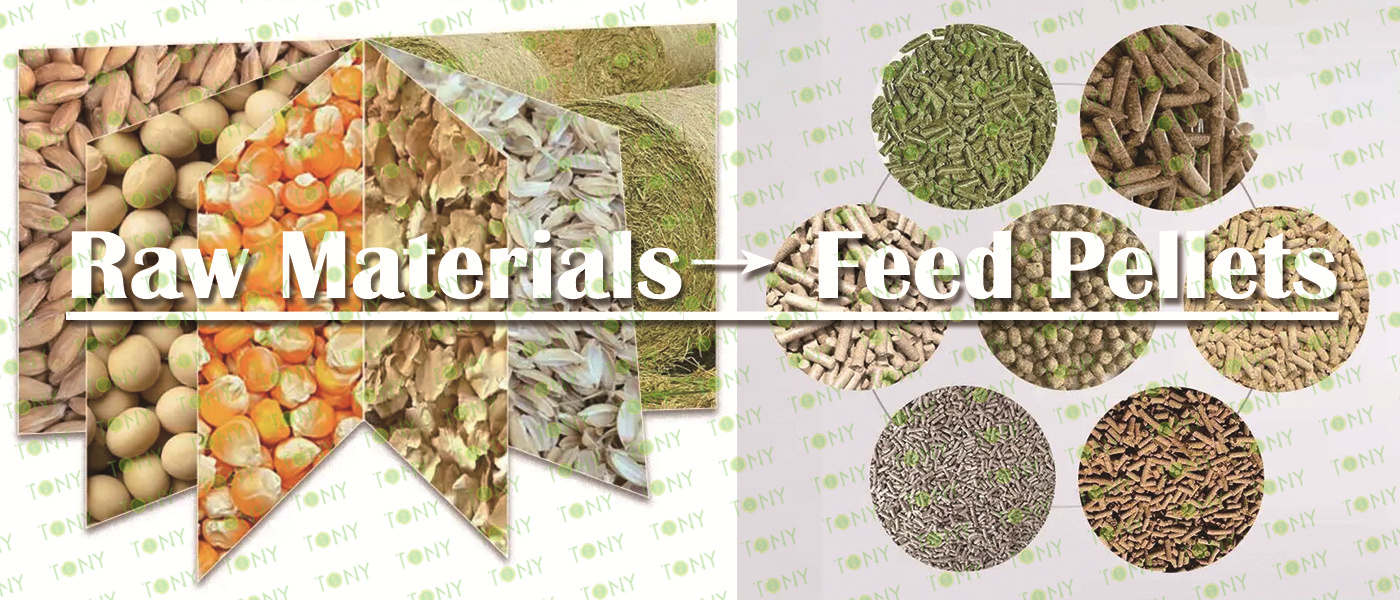The main reason why cattle and sheep like straw pellet feed is that this feed meets their physiological needs and feeding habits in terms of palatability, nutritional characteristics, and physical form. The specific reasons are as follows:
1. Better palatability, matching feeding preferences
Taste improvement: The original texture of straw is rough and hard, and it contains a lot of coarse fibers (such as corn straw, wheat straw, etc.), which makes it unpleasant to eat directly. Cattle and sheep often have low interest. However, when straw is crushed and pressed into pellets, its texture becomes compact and uniform, with moderate hardness, making it smoother to chew and reducing the stimulation to the mouth, making it easier to be accepted.
Odor attraction: Some straw pellets may contain small amounts of additives (such as bran, soybean meal, molasses, etc.) during processing, which have natural fragrances and can stimulate the appetite of cattle and sheep, making them more willing to actively feed.

2. More balanced nutrition, meeting physiological needs
Nutrient complementation: The nutritional value of pure straw is low, with the main components being coarse fibers. Protein, energy, and other nutrients are insufficient. However, when processed into pellet feed, it is usually combined with other feed ingredients (such as corn, soybean meal, minerals, vitamins, etc.) to make the nutrition more comprehensive and balanced. This "comprehensive nutrition" enables cattle and sheep to obtain more energy and nutrients during feeding, meeting their growth, reproduction, or milk production needs, and thus developing a preference for this feed.
Digestibility improvement: When straw is crushed, its coarse fiber structure is destroyed, and it is then subjected to high-temperature pressing (particle processing often involves a brief high-temperature period). Some cellulose is softened, making it easier for rumen microorganisms to decompose and digest. After consumption, they can obtain energy more quickly, naturally making them more willing to choose this "easy-to-digest" feed.
3. Physically form suitable, convenient for feeding and storage
Feeding convenience: Pellet feed is uniform in size (usually 3-8 millimeters in diameter), suitable for the oral structure of cattle and sheep. During feeding, there is no need to strain or tear, reducing feeding time and energy consumption, which is in line with the animal's "efficient feeding" instinct.
Reduced waste: Compared to loose straw, pellet feed is less likely to scatter. When cattle and sheep feed on it, they can chew and swallow more thoroughly, avoiding waste caused by selective eating or dropped feed, indirectly improving their "utilization perception" of the feed, and thus making them more willing to feed.
4. Conforms to the feeding habits of ruminant animals
Cattle and sheep are ruminant animals that need to constantly consume coarse fibers to stimulate rumen peristalsis and rumination behavior. Straw pellet feed retains a certain amount of coarse fiber content (meeting ruminant needs), while also solving the problem of poor palatability of raw straw. It perfectly balances "physiological needs" and "feeding experience", thus becoming one of their favorite feeds.
In conclusion, the straw pellet feed, by improving palatability, optimizing nutrition, and adapting to feeding habits, etc., precisely meets the physiological and behavioral needs of cattle and sheep, and naturally gains their "favor".





















